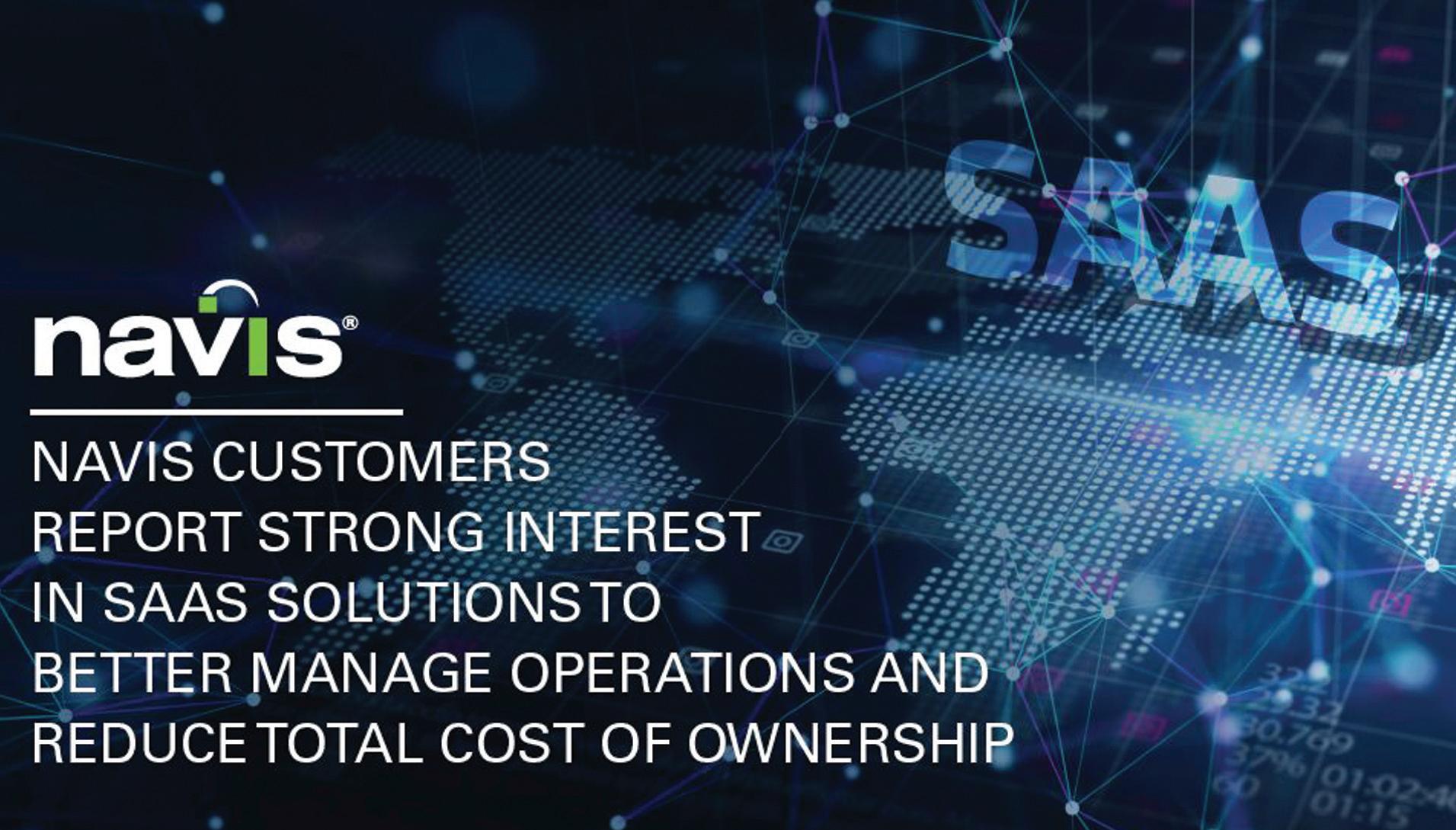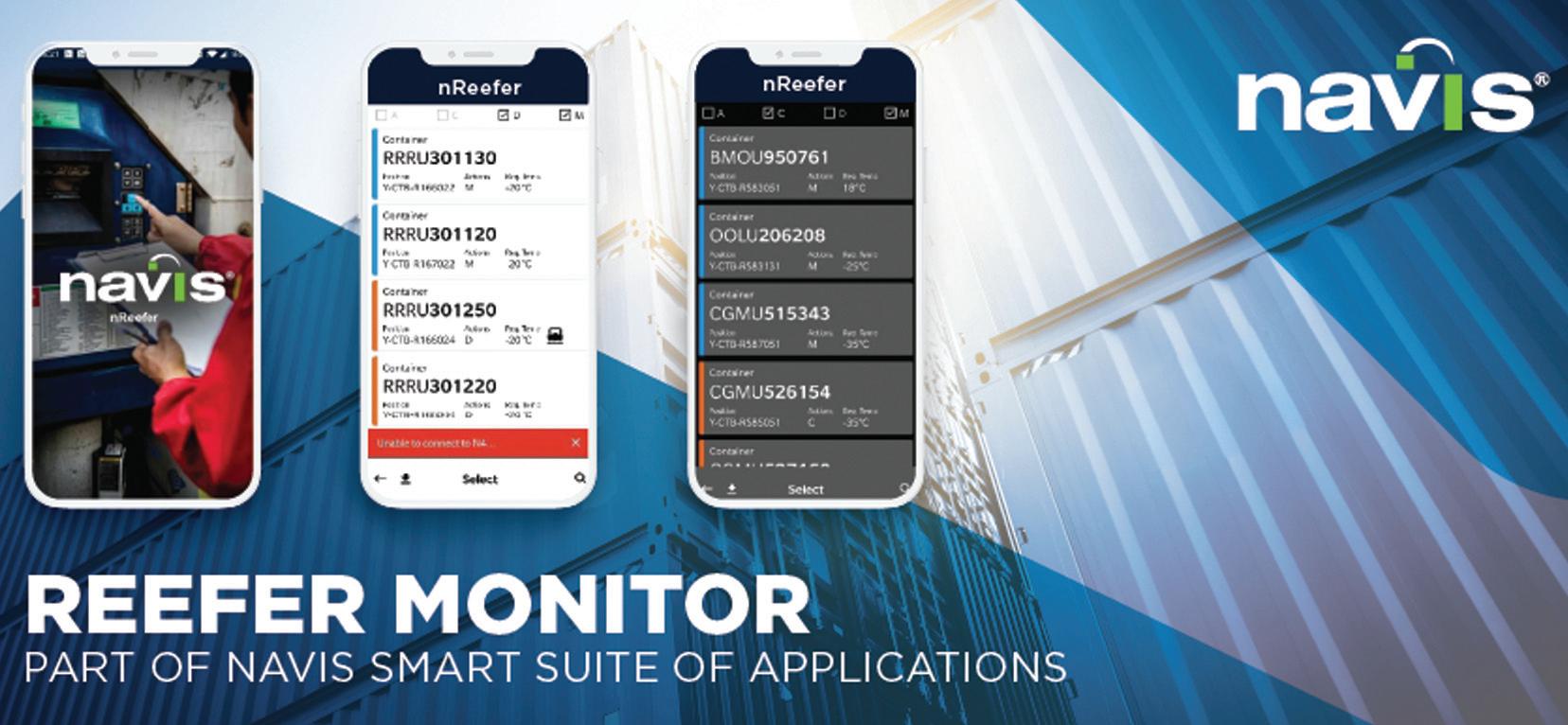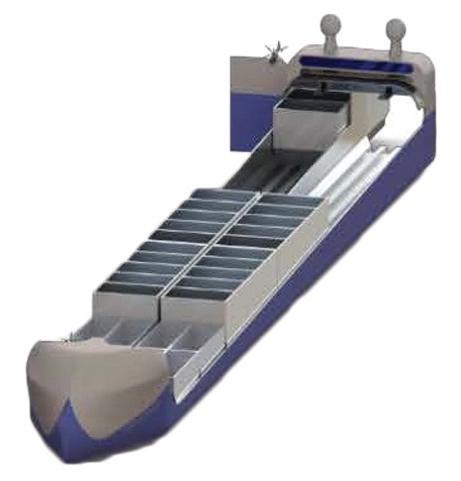
7 minute read
Projects
CLOUD BASED TOS - A GREEN STEP CHANGE
In this article GreenPort talks to Andy Barrons, chief strategy officer at Navis about how cloud based TOS is moving sustainability forward
Photo: LBCT 8 LBCT is the first
fully-automated container terminal in the US and uses Navis TOS
Q How is cloud-based TOS moving green projects forward? increasingly taking steps to adopt this technology. This is especially true in 2020 where we have seen market interest in A Using cloud-based TOS at terminals has been able to move green projects forward in a number of ways. The TOS in the cloud solutions increase nearly 40% compared to2019, and in part, influenced by the effects of Covid-19 on shifting work to home or cloud has allowed terminals around the world to adopt software remote locations. for more efficient container operations, while cutting IT infrastructure and servers on site. This has brought energy savings and efficiency by using more energy efficient data center solutions.
The focus on sustainability in the industry has traditionally been on equipment - including energy efficiency, minimising unnecessary moves and reduction of fuel and the TOS in the cloud can enable container equipment to perform in an ecofriendlier way. The TOS plans the cargo moves by the equipment in the most efficient sequence, which can ensure operators move as much freight though the port with the least amount of moves and in the shortest distance available, resulting in a more sustainable and impactful operation.
A further benefit of using a cloud-based TOS is that it collects an enormous amount of operational data which can be used to inform sustainable business decisions so meaningful work can be carried out at terminals. For example, data collected can include yard and quay crane usage and the number of vehicles needed to load and discharge a vessel. With this data a terminal can optimise allocation of equipment and can calculate other sustainable factors - like CO2 usage - through using the data stored in the TOS. Analysing and acting on this data will support port operations seeking to improve the sustainability impact of their operations and reduce operational cost and waste.
Can you outline the recent cloud survey Navis has completed?
A The cloud survey Navis completed in 2020, “Understanding Your Terminal Strategy with Cloud-based Technologies,” examined operators' level of interest and activity in planning to use cloud-based TOS. The survey of Navis' global terminal operator customers explored the interest, anticipated benefits, myths and concerns for adopting SaaS technology at terminals.
Over the past two years, we have seen a dramatic change in interest in cloud-based TOS and ports and terminals are

While acceptance of cloud-based TOS offerings was relatively low a few years ago, today terminals are more open to the possibilities that TOS in the cloud can deliver reliability and performance for their operations and save IT time and money.
Q Can you explain the larger and smaller wins that Terminal Operating Systems (TOS) can give operators when it
comes to the environment?
Our customers report they experience an up to 40%improvement in productivity and throughput by using an advanced TOS to optimise moves and automate processes. The use of machines to carry out work on site, along with the drastic business process improvement seen from optimising operations, has a great impact on our customers' bottom line and service capability. This has also left a positive impact on the environment as a result of streamlining workflows and reducing waste.
Additionally, software acts as the brain of the terminal and enables operators to find solutions to continuously improve and carry out tasks in greener ways, which is a major win economically and environmentally. Data collected and tracked can help operators to measure and reduce truck idle time at the gate, have more
A
8 Andy Barrons
efficient vessel turnaround at the berth and more productive moves in the yard - all of which help terminals, carriers and trucks operate in a way that's better for the environment.
Along with some of the major advantages of using TOS for greener operations, there are some smaller wins that operators experience from the technology. An example of this from a Navis perspective is operators using mobile applications. A mobile reefer app confirms the temperature in a reefer is at the right level during storage and transport which ensures that that the freight remains at the correct temperature and that there is no overuse of energy, thus yielding an eco-friendlier supply chain performance.
Can you give us an example of an operational cloudbased TOS system and the benefits it has secured?
A strong customer example of optimising and automating processes which led to more sustainable operations is Long Beach Container Terminal (LBCT) in California.
LBCT serves the greater Los Angeles area and is the first fullyautomated container terminal in the United States. Implementing the Navis TOS to support automated operations, is part of a range of initiatives and environmentally conscious investments to turn this terminal operation into one of the cleanest and most environmentally-friendly terminals in the world.
Q How has the pandemic affected demand? A The pandemic has affected nearly every industry and initially impacted trade volume in the supply chain and logistics space. Consumer demand, however, has helped support a rebound in trade for certain products, driven by growth in ecommerce and at least a temporary shift away from spending on services to goods.
The pandemic is also accelerating already existing and longerterm trends. If anyone was in doubt about pollution from congested port cities, Covid-19 and the overnight reduction in all types of traffic congestion contributed to rapidly improving air quality. This experience will reinforce the value of continuing to find solutions that support transport policies and supply chain investment that can deliver economic growth and environmental benefits. plan and maximise the vessel location for efficient load and discharge of cargo; Predictive Visibility which supports better planning decisions and reduces wasteful moves.
Q Why the higher demand for cloud-based TOS? A The Covid-19 pandemic has shown teams they can work remotely just as efficiently as on site, which has accelerated a trend towards locating some planning and operational activities away from the actual terminal site. The pandemic has proven that there isn't a strong advantage to having everyone travel to work on site and that centralising these functions can deliver optimal results. Additionally, we have seen that the technology implementation process, including testing new software and training users, can be done successfully remotely, which we have proven this year through a number of N4 and Octopi TOS go-lives at terminals in many different countries around the world.
What are Navis solutions for both larger and smaller terminals
Navis has a myriad of innovative offerings for both large and small terminals. Along with our flagship TOS for large terminals, N4, we also offer Navis solutions to optimise the use of equipment to avoid unnecessary or excessive use.
For optimisation, Navis offerings include: Prime Route for pooling vehicles to minimise travel distance; Expert Decking for minimising the rehandling and unnecessary stacking of boxes in a yard; Berth Window Management and Berth Optimizer to better Q What are Navis' plans for green products going forward? A The company is working on a lot of offerings to help terminals predict, plan and utilise data for better planning and execution of operations. We are working on putting more solutions on the cloud, offering machine learning technology for better predictability and enhanced Navis Smart applications to improve and streamline processes. All of these advance more sustainable operations while helping terminals run at their peak utilisation.

8 Over the past two
years, we have seen a dramatic change in interest in cloudbased TOS
Q Can you give our readers any take home messages? A Power usage efficiency, electrification and more ecofriendly fuels are part of the sustainability mission.
While it is important to measure that as one piece of the puzzle, data collected from the TOS and using software to maximise operational results, with less energy used, is how terminals can ensure their assets are delivering value for their business and the environment.
More innovative offerings such as the TOS in the cloud, optimsation solutions and automated functionality, will help terminals extend their reach towards higher sustainability goals.

8 The reefer app helps ensure operators move as much freight though the port with the least










